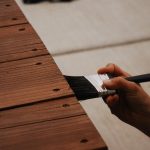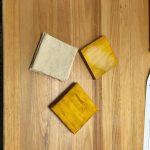
Dying and Staining Wood
Coloring wood is a process of dying and staining wood. It is an art, a finishing touch to beautiful woodwork. Dying and staining are different processes though and can provide different results.
Dying
A dye can be synthetic or natural. Natural dyes are those extracted from herbs ad plants such as from indigo, beets, coffee, and tea. Mauveine is another popular purple dye discovered in the 1850s. With the popularity of dyes, synthetic dyes were also introduced.
Dying wood is not the same as coating the wood. This process simply allows the dye color to bond with the natural color of your wood to give it a different shade. One thing to remember is that dyes are transparent when used in wood. If you use red dye, it can give your wood a red color unless your wood has a natural color like yellow. When red is combined with yellow – you will get an orange wood.
Staining

Staining is premixed colors (solid colors). When used, it bonds with the original color of the wood and covers irregular surfaces such as scratches or wood pores. It is often used to smoothen woods with large pores such as oaks. The pores darken by staining it then it is sanded to make it smoother.
When to Use Dying?
 Dying should be used to put emphasis on fine wood grains such as walnut burl or bird’s eye maple. It is also used for dense woods like hard maple. You can also use dying to balance the color of walnut sapwood. Lastly, dying is also highly recommended if you are working with a blotch-prone wood, say pine tree.
Dying should be used to put emphasis on fine wood grains such as walnut burl or bird’s eye maple. It is also used for dense woods like hard maple. You can also use dying to balance the color of walnut sapwood. Lastly, dying is also highly recommended if you are working with a blotch-prone wood, say pine tree.
When to Use Stains
Staining is used if you are working on wood with coarse textured grains. It is a great way to put emphasis on the wood’s contrasting color.
If you are working on furniture that is often placed outdoors, staining is also recommended. The pigments you used will provide more protection to the furniture once placed outdoors and under direct sunlight.
Pros of Using Wood Dye
- Availability
Whether you need a natural or synthetic dye, you can easily find one. Dyes are available as solvent or binders and in different color or shade.
- Very Effective
Dyes work like paint. You can apply the first and second coating and it won’t even affect the color of the dye you are using. The wood will just absorb it all.
Pros of Using Stain
- Very Effective
With stain, you can cover the entire surface that you wanted to cover. Say it is a large pore on your wood’s surface, just stain it completely to cover the pore.
- Fast Result
It only takes a few minutes for the stain to dry up and affect the wood’s color.
The color you get on the first coat is the final color. It won’t go darker because the tannin of the wood has already reacted. Your first coat is also your final coat when staining.
To dye or to Stain?
Before deciding whether you want to dye or stain your wood, consider a few factors first such as the advantages of using each process, the type of wood you are working on, and the availability of the dye or stain in your market.
